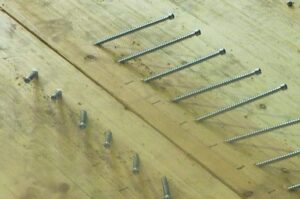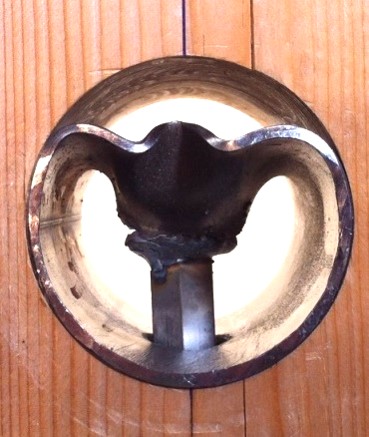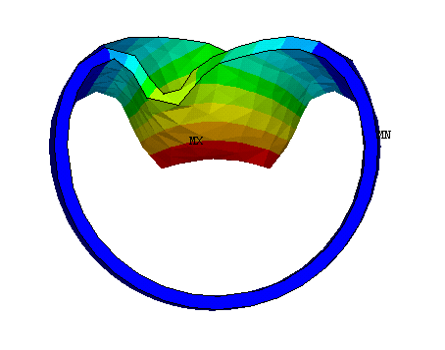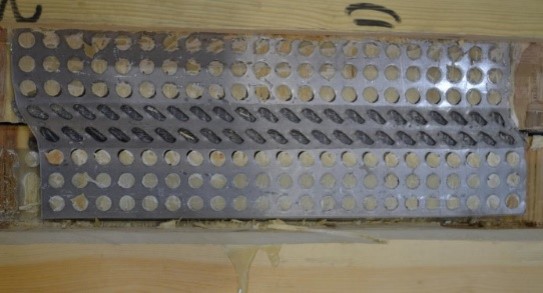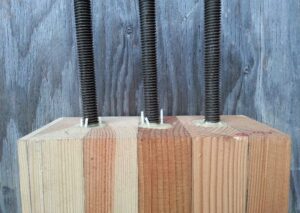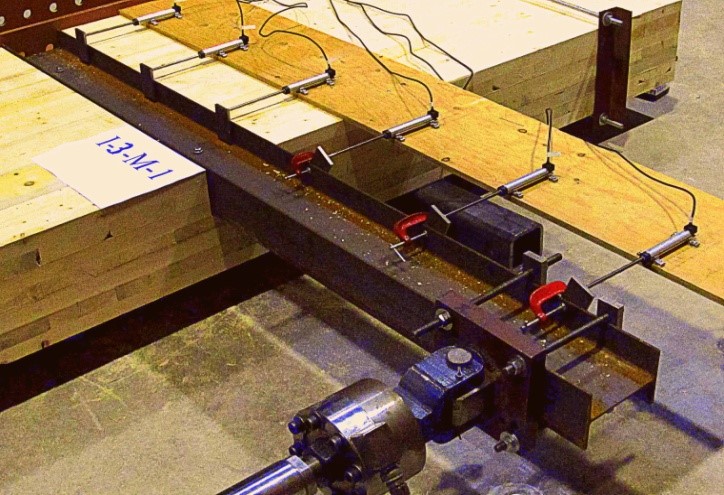High performance CLT shear connection
The research investigated the feasibility of using STS assemblies for the shear connection of the CLT roof diaphragm of a large storage facility where a high-performance and low-manufacturing-cost solution was required. Full-scale specimens were subjected to quasi-static and reversed-cyclic loading. Excellent structural performance in terms of strength and stiffness was obtained while still providing the required ductility for the system to be used in seismic applications. The data obtained from the testing will allow engineers to specify lateral load resisting systems for large scale CLT structures.
Hollow steel-tube connector
A novel connector assembly consisting of hollow steel tubes placed inside cross-laminated timber panels was developed. The criteria that drove the connector development were high capacity, stiffness, and ductility as well as neglectable damage to the timber. Assemblies with varying steel tube diameters were tested using quasi-static monotonic and reversed cyclic loading. The results demonstrated that the desired ductile steel yielding failure mechanism was initiated and wood crushing of any form was avoided. The research demonstrated that this novel connection assembly for cross-laminated timber panels can be utilized in seismic regions.
Modified HSK connector
The connection assembly consist o a modified Holz-Stahl-Komposit (HSK)TM application: perforated steel plates that are adhesively bonded into the timber panel with duct tape being used to cover some rows of the holes in the perforated plate. This arrangement allows the perforated steel plate to yield inside the timber which prevents lateral buckling of the hold-down. Tests at material, component and full-scale hold-down level were conducted using quasi-static monotonic and reversed cyclic loading. The results demonstrated that the modified HSK hold-down assembly provides high initial stiffness as well as the required capacity and ductility for seismic applications in tall mass-timber buildings.
Connections with Multiple Glued-in Rods
Most previous research has focused on testing single rod joints to evaluate the influence of various connection parameters. In practice, however, multiple steel rods are required to transfer the loads from one structural component to the next. This project investigates joints composed of glued-in steel rods in glue-laminated timber. The influence of the anchorage length was studied to establish performance benchmarks; then joints with multiple rods (two, three and four rods with the spacing between rods varied) were manufactured and tested under uniaxial quasi-static tension loading.
Connection for timber-steel hybrid system
Hybrid systems have grown in popularity over the past years but the lack of established design guidelines has delayed the construction of the hybrid structures. This project focuses on the detailed design of hybrid systems through an experimental study on an innovative timber-steel hybrid system called “FFTT”. The system relies on CLT wall panels for gravity and lateral load resistance and embedded steel sections for ductility under earthquake loads. An important step towards the practical application of the system is obtaining the proof that the connections facilitate the desired ductile failure mode.

